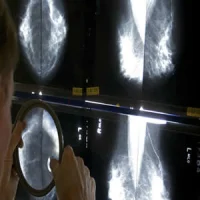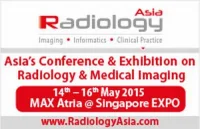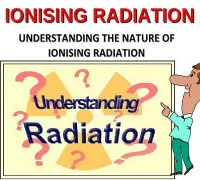According to a new study published in Radiology, a substantial gap exists between patient expectations and current practices for providing information about medical imaging tests that use radiation. Researchers say the findings highlight a need for better communication as medicine enters an era of patient-centred care.
For the study, researchers from Memorial Sloan Kettering Cancer Center (MSKCC) in New York City analysed over nine hours of transcribed conversations with 30 people who had undergone medical imaging tests to assess their understanding of the benefits and risks associated with various medical imaging procedures and their expectations regarding communication of those benefits and risks. Participants were divided into six focus groups, including five groups of cancer patients and one group of patients in a lung cancer screening programme.
The study found that participants perceived clear benefits from imaging tests like x-rays, computed tomography (CT) scans, and nuclear medicine examinations, but that patient knowledge regarding which imaging tests use ionising radiation was variable and generally poor. For instance, some patients were unsure if ionising radiation was used in mammography, bone scans and stress tests. Many participants were uncertain if magnetic resonance imaging (MRI) used ionising radiation.
While most participants were highly aware of risks associated with ionising radiation exposure, including the potential risk of future cancer, they expressed a desire to receive this information from their own doctor.
“This may not be what we in the medical field want to hear, but I think it’s important that we hear it,” says senior author Jennifer Hay, PhD, a behavioural scientist at MSKCC. “Patients want this information, and they prefer to receive it from doctors they know and trust.”
In addition to information about risk, the patients would like to be given information concerning the rationale for specific test orders and testing intervals, as well as testing alternatives. Most met their needs for more information through self-directed internet searches.
Participants desired a wide range of information about medical imaging tests. Most wanted basic education about which imaging tests used ionising radiation and how doses compared among them. Ionising radiation from diagnostic medical imaging was occasionally confused with radiation therapy, and some participants were unable to distinguish between the two.
The desire for information on the risks associated with ionising radiation from medical imaging was strongest among patients who had made the transition from treatment to survivorship. These patients wanted to know how risk accumulates from multiple exams over time, whether additional ionising radiation exposure could be avoided by substituting MRI for CT, and if longer intervals between follow-up exams could be negotiated.
The different levels of desire for information among patients lend support to a tiered approach for patient-centred communication, Dr. Hay notes. “A tiered approach would provide all patients with information and offer additional options to those who want to dig deeper and find out more,” she says.
Source: Radiological Society of North America
Image Credit: Wikimedia Commons
For the study, researchers from Memorial Sloan Kettering Cancer Center (MSKCC) in New York City analysed over nine hours of transcribed conversations with 30 people who had undergone medical imaging tests to assess their understanding of the benefits and risks associated with various medical imaging procedures and their expectations regarding communication of those benefits and risks. Participants were divided into six focus groups, including five groups of cancer patients and one group of patients in a lung cancer screening programme.
The study found that participants perceived clear benefits from imaging tests like x-rays, computed tomography (CT) scans, and nuclear medicine examinations, but that patient knowledge regarding which imaging tests use ionising radiation was variable and generally poor. For instance, some patients were unsure if ionising radiation was used in mammography, bone scans and stress tests. Many participants were uncertain if magnetic resonance imaging (MRI) used ionising radiation.
While most participants were highly aware of risks associated with ionising radiation exposure, including the potential risk of future cancer, they expressed a desire to receive this information from their own doctor.
“This may not be what we in the medical field want to hear, but I think it’s important that we hear it,” says senior author Jennifer Hay, PhD, a behavioural scientist at MSKCC. “Patients want this information, and they prefer to receive it from doctors they know and trust.”
In addition to information about risk, the patients would like to be given information concerning the rationale for specific test orders and testing intervals, as well as testing alternatives. Most met their needs for more information through self-directed internet searches.
Participants desired a wide range of information about medical imaging tests. Most wanted basic education about which imaging tests used ionising radiation and how doses compared among them. Ionising radiation from diagnostic medical imaging was occasionally confused with radiation therapy, and some participants were unable to distinguish between the two.
The desire for information on the risks associated with ionising radiation from medical imaging was strongest among patients who had made the transition from treatment to survivorship. These patients wanted to know how risk accumulates from multiple exams over time, whether additional ionising radiation exposure could be avoided by substituting MRI for CT, and if longer intervals between follow-up exams could be negotiated.
The different levels of desire for information among patients lend support to a tiered approach for patient-centred communication, Dr. Hay notes. “A tiered approach would provide all patients with information and offer additional options to those who want to dig deeper and find out more,” she says.
Source: Radiological Society of North America
Image Credit: Wikimedia Commons
Latest Articles
Cancer, X-ray, Mammography, medical imaging, radiation therapy, ionising radiation
According to a new study published in Radiology, a substantial gap exists between patient expectations and current practices for providing information abou...










